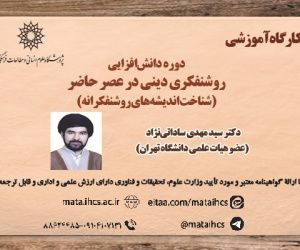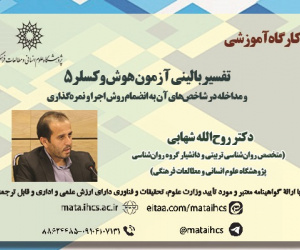تحلیل زمان کانتی-دلوزی در نمایشنامه «اتاق روشنی به نام روز» اثر تونی کوشنر (مقاله علمی وزارت علوم)
درجه علمی: نشریه علمی (وزارت علوم)
آرشیو
چکیده
پژوهش حاضر تحلیل بینارشته ای نمایشنامه اتاق روشنی به نام روز اثر تونی کوشنر بر اساس خوانش دلوز از فلسفه کانت است. بر اساس این تحقیق بی چفت و بست بودن زمان طبق قاعده اول کانتی و همچنین بی نظمی حواس طبق قاعده چهارم آن، منتج به بوطیقایی پسامدرن می شود که شاید بتوان آن را نمایشنامه روابط به هم ریخته نامید. مطالعه حاضر اتاق روشنی به نام روز را طبق قواعد کانتی از دو جهت بررسی می نماید: اول آنکه، تلاش شخصیت ها برای ایجاد محوری تحت عنوان لولا در بافت زمانی از لولا گریخته دلوزی امری محال است. به عبارت دیگر، تقلای آنها برای رسیدن به یک زمینه مشترک ذیل مفهوم کمونیسم محکوم به شکست است. دوم آنکه، از چهارچوب دررفتگی زمان و به تبع آن بی نظمی حواس، روابط هنری-ادبی میان حوادث را نیز هم به هم می ریزد. به طوری که وحدت و یکپارچگی ویژه به مفهوم کلاسیک در این اثر وجود ندارد. ازاین رو می توان نتیجه گرفت بی چفت وبستی زمان که کنش های بدون توالی و ازهم گسیخته را به دنبال دارد و به هم ریختگی قوا که ماحصل بی نظمی حواس است مقوله بازنمایی را امری محال و غیرممکن می سازد.The Analysis of Kantian-Deleuzian Time in Tony Kushner’s Play A Bright Room Called Day
This paper offers an interdisciplinary analysis of Tony Kushner’s play, A Bright Room Called Day, through the lens of Gilles Deleuze’s interpretation of Immanuel Kant’s philosophy. This study investigates how postmodern poetics are shaped by Kant’s first principle –“the time is out of joint”– and his fourth principle – “the disorder of all senses” –. Together, these concepts generate what can be termed The Drama of Disordered Relationships, a framework that reveals the complexities of human interactions in the context of political turmoil. The analysis focuses on two primary dimensions within Kushner’s work. First, it examines the characters’ attempt to establish a common ground or “Cardo” that is subjugated to the ideals of communism. However, this endeavor is ultimately portrayed as doomed to failure due to the unhinged nature of time, which disrupts any possibility of a cohesive narrative or shared understanding among the characters. Second, the paper explores how this disjointed temporal framework and the resulting disorder of the senses disturb the artistic and literary relationships among events in the play. This disruption challenges the organic unity typically found in classical drama, emphasizing a departure from traditional narrative structures and highlighting the fragmented experience of reality. As a result, the interplay between unhinged time and chaotic relationships complicates or in other words, makes representation of art impossible within Kushner’s work. The findings suggest that the principles derived from Kantian philosophy not only illuminate the thematic concerns of A Bright Room Called Day but also reflect broader anxieties regarding meaning, coherence, and artistic representation in contemporary literature. This study contributes to understanding how philosophical frameworks can inform literary analysis, particularly in works that grapple with complex socio-political themes and the challenges posed by modernity.







